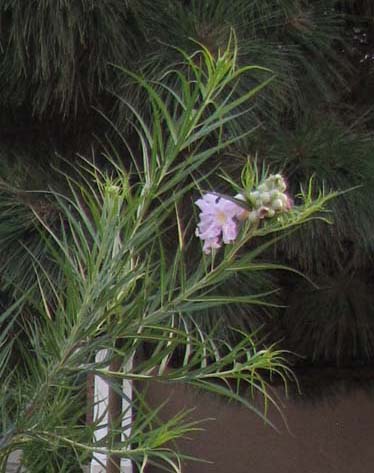RICHARD S. DARGAN | Landscape
Desert Willow | |||||||
|
|
Species: Chilopsis linearis The desert willow is a remarkably resilient species that grows rapidly in arid conditions that would kill most other trees. It rises up on median strips, in vacant lots—even through cracks in the pavement. Once established, the desert willow requires very little care. An untended willow will take on the appearance of a shrub, with multiple trunks at or near ground level. It can easily be groomed into a small tree by cutting away branches near the base. At maturity, it will reach a height of 25 to 30 feet. The desert willow produces its fluffy seeds inside a long capsule/bean. You can grow them from seeds or cuttings, or, you can buy one, plant it and wait a couple of years—chances are several progeny will take root in your yard from the original plant's scattered seeds. Despite its name, the desert willow is not actually a willow, but a member of the bignonia family, which includes the catalpa and jacaranda trees. |
||||||
